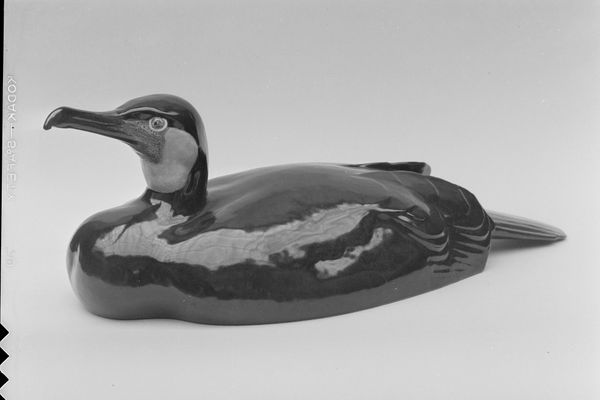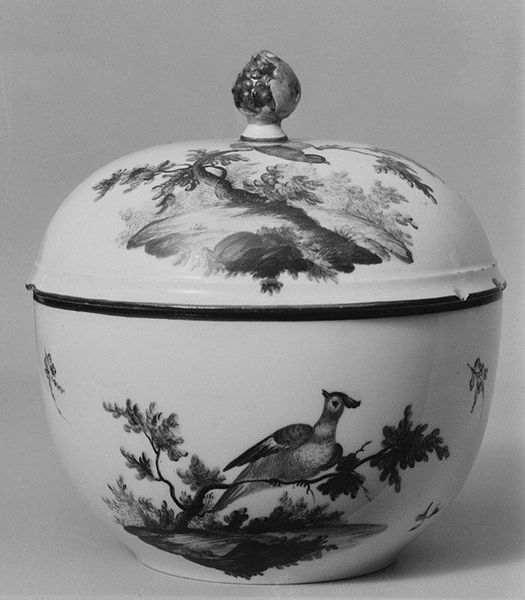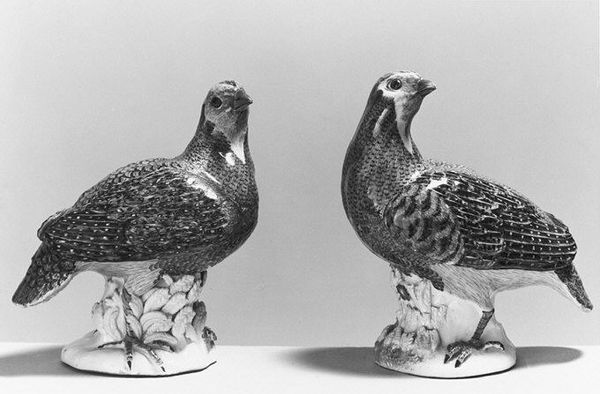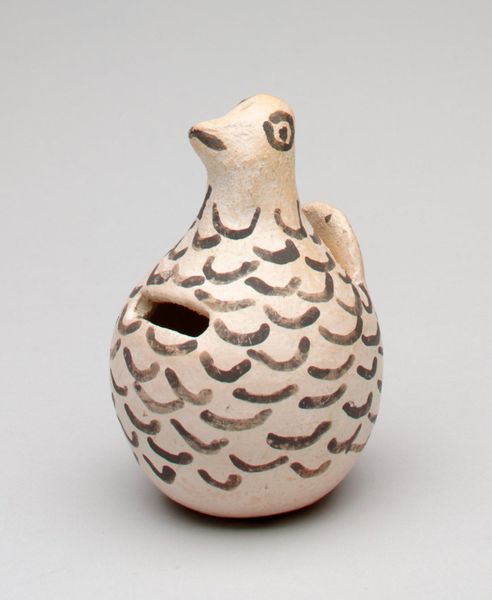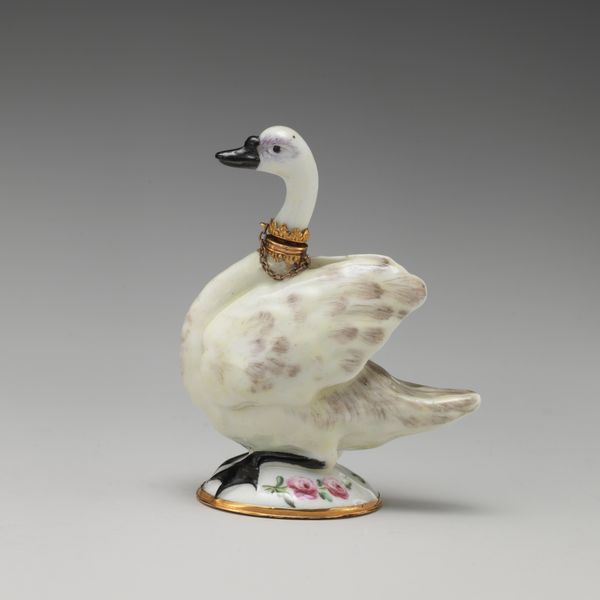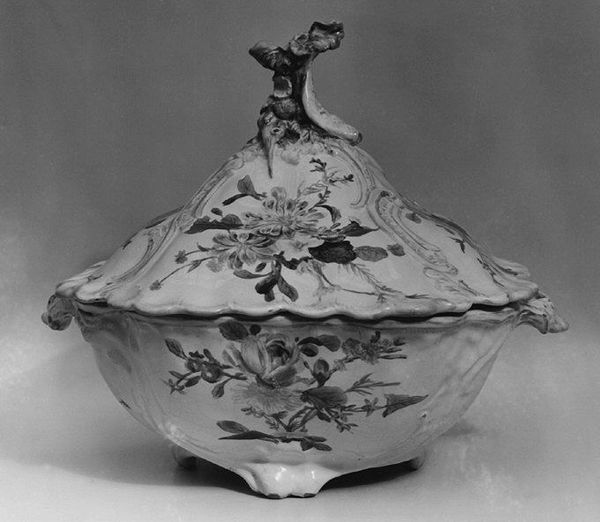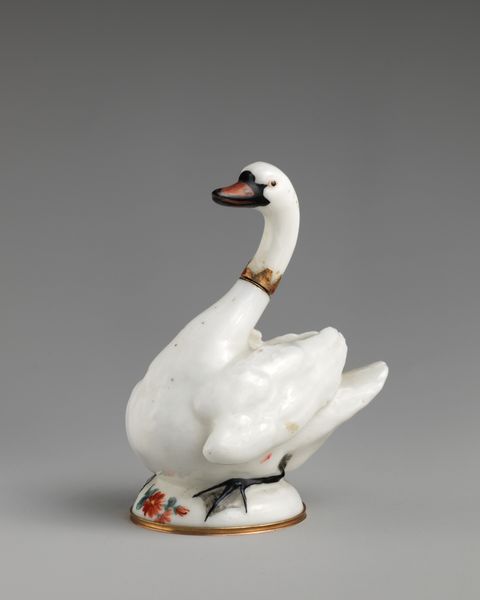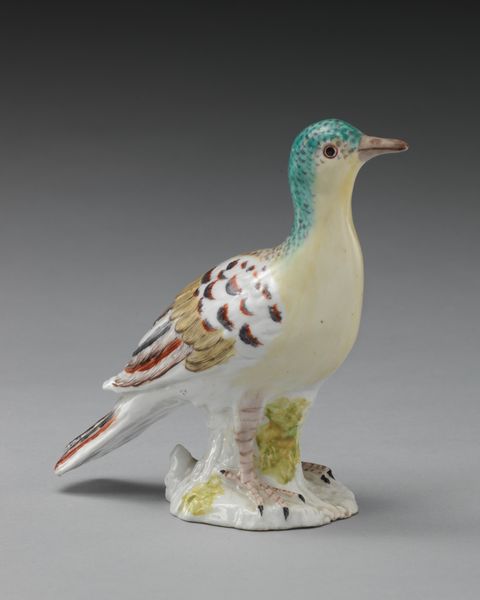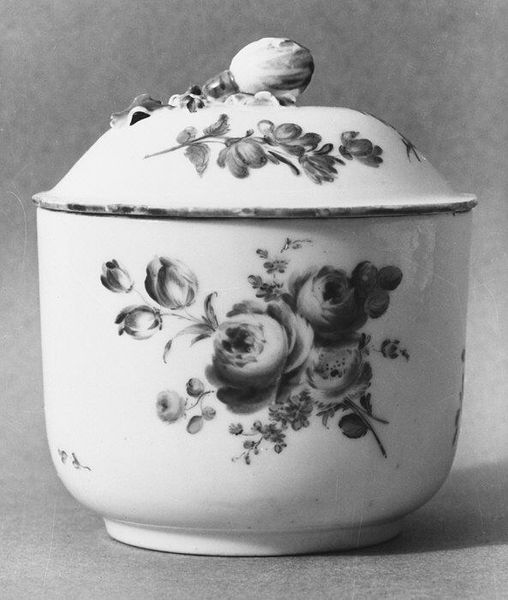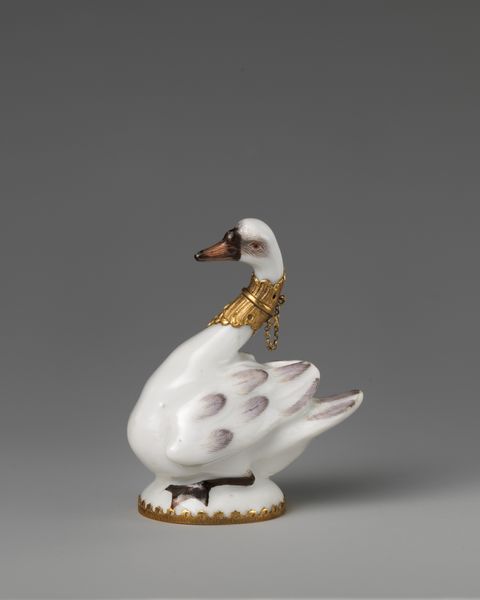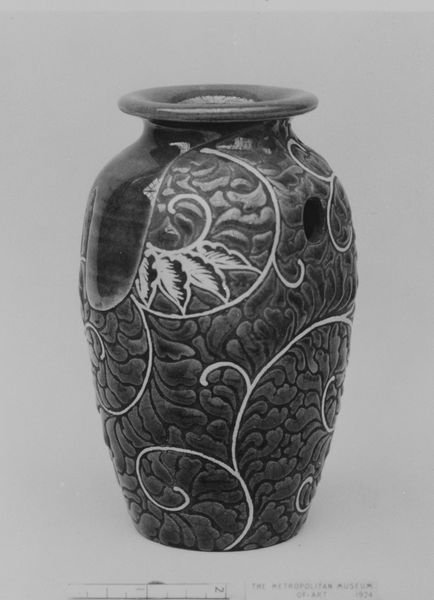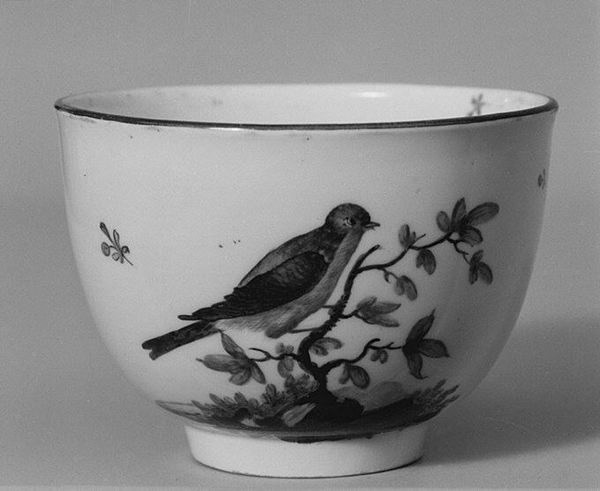
ceramic, sculpture
#
asian-art
#
ceramic
#
sculpture
#
orientalism
#
decorative-art
Dimensions: H. 5 1/8 in. (13 cm); Diam. 4 1/4 in. (10.8 cm)
Copyright: Public Domain
This is a censer with a kingfisher knob, made by Eiraku Hozen, a Japanese artist who lived between 1795 and 1854. The censer is adorned with stylized motifs of what appear to be plants or flowers and is crowned with the figure of a kingfisher. The kingfisher, with its vibrant plumage and association with water, symbolizes swiftness, prosperity, and marital fidelity in East Asian cultures. Consider the 'halcyon days' of Greek myth – a period of calm and peace associated with the kingfisher's nesting period near the winter solstice, a time of dark, brooding introspection. This connects the bird to themes of tranquility and renewal. The kingfisher as a symbol transforms across cultures and epochs. Like the resurfacing of ancient memories in dreams, symbols possess a cyclical quality. They evolve, adapt, and reappear in new contexts. Such motifs become powerful forces, engaging viewers on a subconscious level, and reminding us of the enduring human quest for meaning and connection across time.
Comments
No comments
Be the first to comment and join the conversation on the ultimate creative platform.
